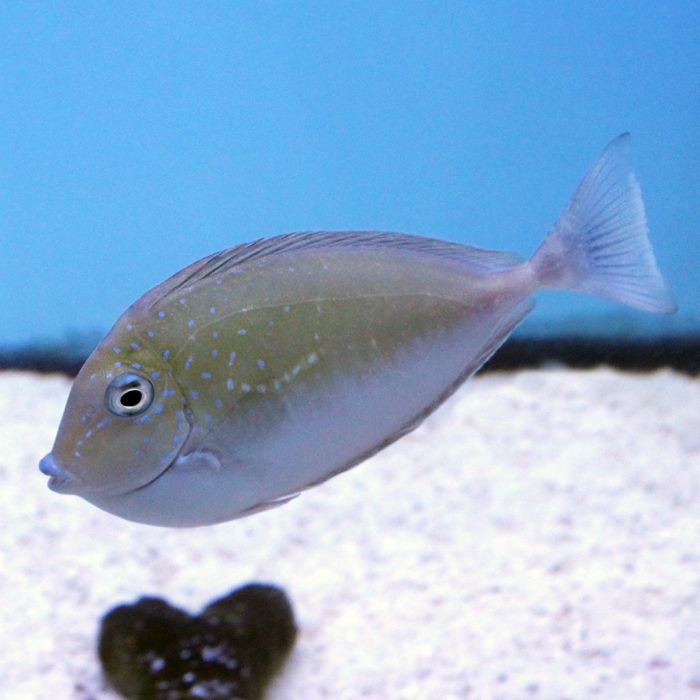Vlamingi Tang (Asia Pacific)
An impressive display animal for large aquariums, the Vlamingi tang develops stunning colors when mature. Its long body is overall a very light slate color with a yellowish face. Bright blue highlights adorn the fish all over; in front of its eye, its lips, over most of its fins and as small speckles over its face and body. The end of its tail is yellow and it may develop streamers when mature. It does not grow a long horn like some other unicorn tangs, but develops a distinguished pointed nose. Juveniles are a light olive-slate color with blue polka-dots over their bodies, and are easily identified by some of these spots forming a brighter upwards facing arch on its shoulder. Males and females are visually identical.
The Vlamingi tang can grow to be approximately 24 inches long and needs a large aquarium as an adult, we recommend at least 360 gallons or larger.
Tangs in the genus Zebrasoma can be quite feisty, often chasing other fish in the aquarium. They don't appreciate living with other tangs, especially others with the same shape. If they are to be kept with other tangs they should be added last, and the aquarium of sufficient size.
Tangs are also called surgeonfish or doctor fish because they have at least one spine just in front of the tail which, when the tail is bent, can be stuck out and used as a threat display or weapon against competitive fish or predators. It is important to be cautious of this spine when handling the fish in a net. They feel most secure when there is plenty of live rock to hide in, as well as open space for swimming. In the wild some tangs live in schools, however in the confines of an aquarium it is usually best to have only one of each genus, or they may be extremely aggressive to each other. They are typically very peaceful with other types of fish.
Care should be taken with tangs to ensure they do not catch external parasites, such as Marine ICH and velvet, to which they are very prone.
Tangs do not eat coral or invertebrates and are considered reef safe. They are primarily herbivorous, and although they love to eat meaty foods, they must be fed plenty of marine algae in order to remain healthy and vigorous. Having a proper diet may also reduce aggressive behaviors; tangs naturally graze on algae throughout the day. Diet should include plenty of marine algae and Spirulina, frozen mysis shrimp, and other high quality items. They typically learn to eat dry foods easily. It is preferable to feed more than once a day, with an algae clip offered approximately every other day.
















